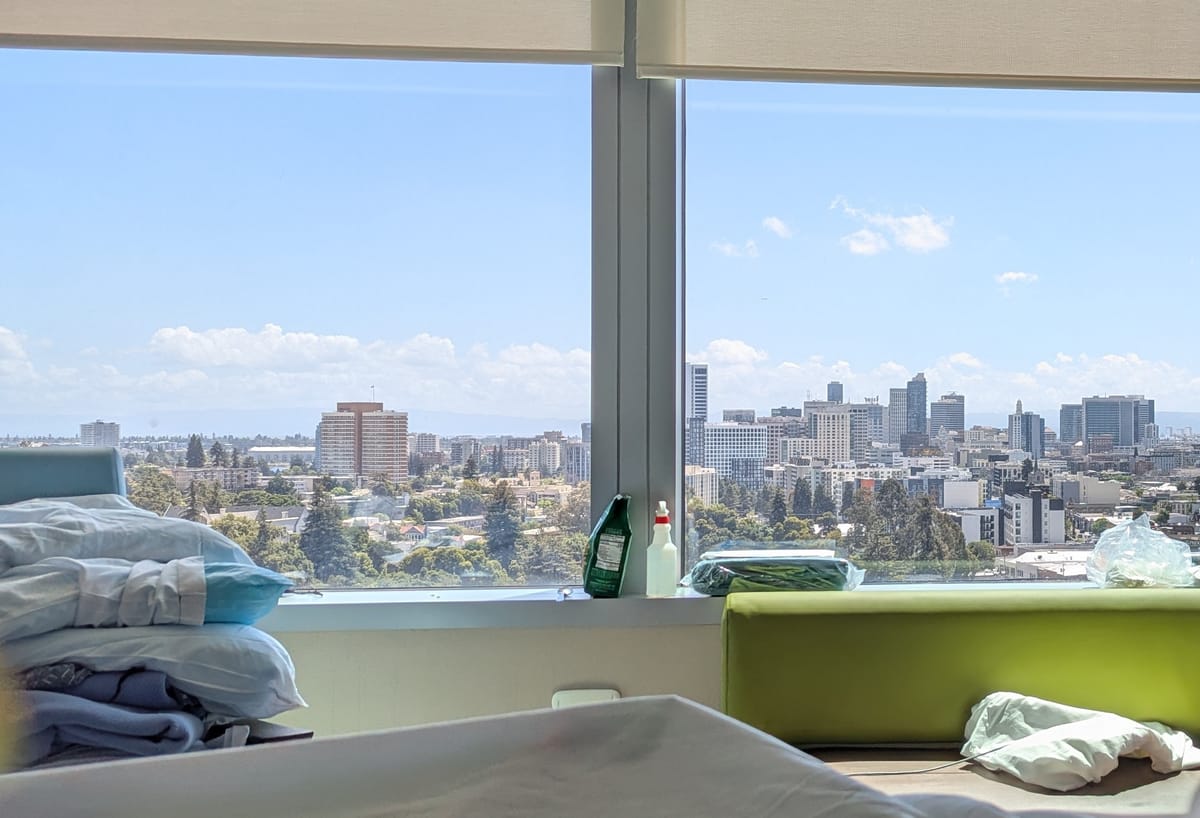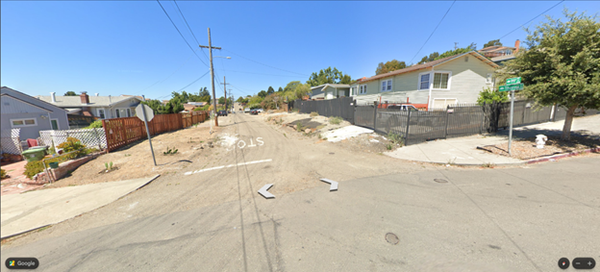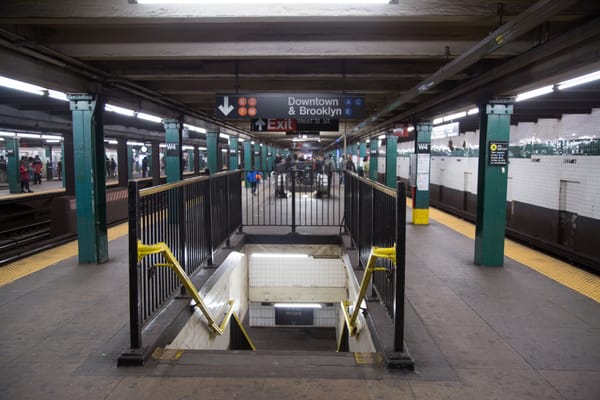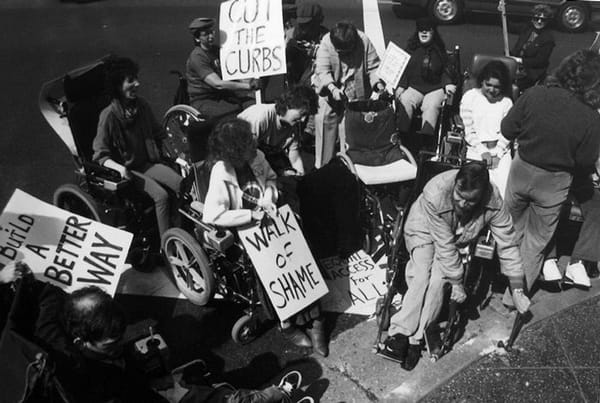6/2/25: Kaiser's my Reminder of Social Systems' Significance

Plus an urgent call-to-action for Californians at the end of the newsletter…
Apologies for my absence. I've been battling a pressure sore since early 2024 (long story, trust me), and a few weeks ago, a backup home health nurse did a dressing wrong and got the sore infected in the process. On Friday 5/9 I started not feeling well, and the next morning I was sporting a 102.3°F fever. I called an ambulance (going in my wheelchair was out of the question), went to the ER, and spent six days in Kaiser Oakland on IV antibiotics. Then, I was sent home with a Peripherally Inserted Central Catheter (PICC, or "PICC line") and 10 days of at-home IV antibiotics. As for the newsletter, recovering and catching up on work took priority last weekend, but now I'm back.
The Kaiser visit was actually relevant to this newsletter. Each time I’m in the hospital is a stark reminder that our healthcare system is reliant on oh-so-many other parts of society just to function. Unfortunately, those societal pieces are under threat, which means my hospital stays and health – along with the stays and health of disabled folks nationwide – are also endangered.
On Saturday, May 10, I felt too sick to get up in my wheelchair and get driven to the ER – so, needing an ambulance instead, I called an Oakland 911 system that from 2023 through at least 2024 had the worst call times out of any city in the state and at some points had 20-minute wait times. The 911 issue was a mix of outdated equipment and resource constraints in a city facing historic budget shortfalls. California’s Prop 13, which significantly curtails property tax rates and allowable increases, supercharges our cities’ budget problems – and has affected Oakland’s emergency services since its inception in 1978, when four fire stations closed to cover the city’s new Prop 13-fueled budget shortfall. Echoing 1978, Oakland temporarily closed two fire stations just last year to help cover its deficit, leading to longer fire and ambulance response times for residents nearby. I wasn’t affected by those closures, but folks in the hills were – and it was all a reminder that the emergency systems people with disabilities (PWDs) disproportionately rely on are surprisingly vulnerable to disruption and diminished service.
It’s always tough to find a good vein on me for an IV, so the nurses in the Kaiser ER used an ultrasound to place an IV deep in my upper arm. Once that was in, I received IV saline for hydration and antibiotics for the infection. Getting that saline was possible because supply chains were intact – but the supply of IV bags and fluids has been disrupted twice in less than a decade because of catastrophic hurricanes. In 2017, Hurricane Maria led to a shortage of IV bags produced by Baxter in Puerto Rico; then, last year’s Hurricane Helene “shuttered a Baxter plant that manufactures 60% of IV solutions for the US,” leading hospitals to limit IV fluid use and push oral fluids instead. We know that climate change amplified Maria’s rainfall and made Helene “more powerful, rainier, and significantly more likely.” With ongoing warming and diminished federal support for both resilience and disaster recovery, those kinds of disruptions – whether to IV bags or other disposable medical supplies – will become more likely. Fighting monopolies so we aren’t so reliant on Baxter alone would be one way to reduce the risk, as would increasing our general climate resilience through green and gray infrastructure… Until then, it’s a game of chance.
Hospitals operate with a range of staff including generalist doctors, specialists doctors, floor nurses, wound nurses, medical assistants, the transport crew (who push patients’ beds from the ER to hospital rooms, to and from radiology, etc.), the “dietary” team that asks you what underwhelming hospital food you want to grin and bear the next day, housekeeping, and more. A huge chunk of those professionals are immigrants, and I’d say around half of my nurses had noticeable accents. A recent study looking at the Current Population Survey (CPS) found that of more than 20 million people working in formal and informal healthcare settings, 2.3 million were naturalized citizens, almost 700,000 were documented noncitizens, and more than 366,500 were undocumented immigrants. Out of all healthcare sectors, long-term care (LTC) has the highest share of immigrants (citizen and noncitizen, documented and undocumented) at 28%; home care, a subset of LTC, is even higher at 32%. (Side note: one of my personal care attendants is a noncitizen immigrant and kept me company for a while at Kaiser). But as Politico covered this week, “Trump’s targeting of legal immigrants threatens [the] health sector” from home care to hospitals. Hospitals and home care systems can’t survive in a world where ICE arrests documented immigrants at immigration hearings. Even a drive to get all undocumented immigrants will exacerbate the existing caregiver shortage and harm PWDs. Unless things reverse course, those of us who use healthcare and home care will face higher costs, worsened care, and heightened health risks. (Of course, none of the above focus on PWDs detracts from caring about immigrants' rights and well-being, nor the threats posed by ICE and Trump's anti-immigrant policies).
Finally, my whole hospital stay was made possible by Medi-Cal (California’s Medicaid) footing the bill. And as you may have heard, Medicaid is under attack; one Republican senator is even saying you should just accept Medicaid cuts, accept early death and accept Jesus. At the national level, the Republican Big, Beautiful Bill includes work requirements that could leave almost 5 million uninsured over 10 years; requires that Medicaid eligibility be checked every six months instead of every 12 (which will lead people to lose coverage through missed paperwork while overwhelming already-overwhelmed social workers); and slashes federal funding in ways that could push states like California to trim back the in-home care that enables independent living. State leaders are balancing austerity on the backs of disabled people as well. In California, Gov. Gavin Newsom’s proposed budget includes a draconian $2000 asset limit after years of a $130,000 limit and one year of no limit at all; the budget also limits In-Home Supportive Services (IHSS) providers’ working hours to 50/week, which would hurt already-underpaid staff and make it harder for recipients with disabilities to find help for the hours they are allocated.
🧵🧵 People on Medi-Cal, myself included, used to deal with the Draconian $2,000 asset limit... A figure that wasn't changed since 1980 and would be almost $8,000 today adjusted for inflation. With the limit gone, many of us have more savings for emergencies & Independence. This would tear that away
— Alex Ghenis 🧑🦼 (@rollonyouchairs.bsky.social) 2025-05-31T06:17:03.729Z
That’s it for my hospital stay, so it’s time to cover other happenings. In some good news from across the country, Disability Rights New Jersey (which had paused services due to a DOGE-driven freeze on its funding) finally got much of the money it was legally entitled to, with more set to be released soon. Next door in New York, Family Residences and Essential Enterprises, Inc. opened their new four-bedroom, disability-oriented property with physical accessibility features (such as a dishwasher with a sideways-opening door) plus smart technologies throughout – all of which help residents with independence. And in Oregon, a new one-block development that combines “health care, housing, [and] job training” is finally taking shape, including “an 84-unit affordable housing complex… scheduled to open next fall.”
In not-good news, Cal Matters has a piece on gentrification and public transit in the LA area showing that neighborhoods with rising rents also saw a decline in transit ridership. Referencing a 2024 study by UCLA researchers, Cal Matters notes that “[a]cross the region, a neighborhood-wide rental hike of an extra $230 per month predicted a 22% decline in bus and train boardings.” This makes sense given lower- and moderate-income renters are more likely to ride the bus than higher-income renters are; rising rents push those first two groups elsewhere, often to places with worse transit access.
Disabled folks are disproportionately likely to be renters, lower-income, and transit riders, so the dynamic in LA hits them hardest. When PWDs get priced out to areas with worse transit access, we may be unable to drive a car or ride a bike to compensate, and those of us who can afford a vehicle might face extra costs for ramps or hand controls. PWDs will thus face fewer transportation options – a scenario that Cal Matters says has “been found to put a person at risk of higher unemployment, poorer health and more pronounced social isolation.” Disabled people already have higher rates of unemployment, face more health issues, and have “significantly higher” rates of social isolation compared to able-bodied folks, so limiting their transit options is pouring fuel on a bunch of fires. Because reduced bus ridership stresses transit agencies’ budgets and takes away political justification for transit funding, LA’s gentrification-transit dynamic also harms the transit systems so many PWDs use to get around. The whole thing is a multi-whammy for disabled folks in LA.
The UCLA study's findings give ammunition to all sorts of YIMBY arguments about reducing or eliminating parking minimums, liberalizing zoning, reforming building codes (within reason) for more affordable construction, and streamlining permitting. Cal Matters mentions SB 79, proposed legislation that “would allow for dense apartment construction around major public transit stops, including on land owned by transit agencies.” And while many justice groups are opposing SB 79 because it doesn’t have affordability requirements, the truth is that new market rate housing tames nearby rents and limits displacement of the lower- and middle-income renters who most use transit. That’s good news for the disability community.
SB 79 is likely to get a floor vote in the California Senate tomorrow, Tuesday 6/3, and the Arch-NIMBY group Our Neighborhood Voices has launched a huge phone drive in opposition. If you’re in California, you can still call in favor tomorrow (or leave a voicemail tonight). You can find your state Senator here.
Take care of yourselves out there.
In other news…
Private equity snaps up disability services, challenging state regulators • Stateline
When climate disasters hit, they often leave long-term health care access shortages, study finds
Complete Streets and Walkability Boost Older Pedestrian Safety
How L.A. gentrification is killing its public transit system - CalMatters
China’s airlines raise alarm as travellers ditch planes for bullet trains | South China Morning Post
4 billion people endured extra month of extreme heat due to climate change, experts say | AP News
Clean Energy Project Cancellations Top $14 Billion So Far in 2025 - Inside Climate News
The ‘r-word’ is back. How a slur became renormalized | CNN
Disabilities Beat: Fact-checking HHS claims about autistic transgender people – WAMC
Hurricane Season Will Be Even Riskier for Undocumented People This Year - Inside Climate News
Trump's FCC delays multilingual emergency alerts for natural disasters, sparking concern in L.A.
Being Heumann: Everything we know about the upcoming Apple Original Film
Housing Market Expert Sees 'Alarming' Trend - Newsweek
Serious collisions on 20mph and 30mph roads at record low
MTA defies feds' fourth deadline to kill congestion pricing, calls Duffy threats a 'sham'
What Will Tariffs Do to the Energy Economy? Here Are Three Scenarios - Inside Climate News
RFK Jr.’s fluoride ban would ruin 25 million kids’ teeth, cost $9.8 billion - Ars Technica




